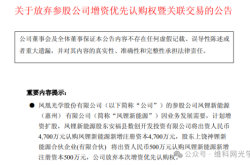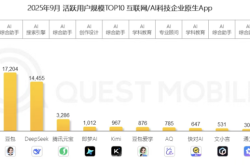Stop price wars, can e-commerce reverse?
![]() 08/14 2024
08/14 2024
![]() 528
528
© Read Finance · Original / Produced by the Internet Team
E-commerce was originally the sector leading in both operating scale and profitability within the internet industry.
However, over the past few years, e-commerce has faced the most lamentable situation. After a series of sharp drops in share prices, the PE multiples of major e-commerce platforms have narrowed to 9x~13x in 2024, with valuations aligning with those of low-end manufacturing stocks.
Despite operating in a gold mine, valuations have plummeted, primarily due to two main concerns in the market: first, the impact of macroeconomic consumption fluctuations; second, the intense price competition among platforms.
Now that the industry has halted price wars, can e-commerce reverse its fortune with reduced competition?
This article holds the following views:
1. Other e-commerce platforms cannot replicate Pinduoduo. Due to differences in traffic distribution and supply structure, other platforms cannot strongly bind traffic with low prices as Pinduoduo does, failing to achieve its extreme low prices while suffering from declining average order value and slowing revenue growth.
2. E-commerce is returning to the right track. In the short term, after halting price wars, brand merchants benefit, bringing more commission and advertising revenue to the platforms. In the long run, e-commerce avoids the possibility of bad money driving out good and deflation, contributing to the long-term development of the industry.
3. E-commerce still has growth potential. E-commerce platforms can shift pressure onto merchants, such as through the rollout of full-site promotion tools, essentially taking away merchants' "traffic bidding rights" and converting free traffic into paid traffic, further monetizing merchants.
/ 01 / Other E-commerce Platforms Cannot Replicate Pinduoduo
The over-one-year-long e-commerce price war has ended.
The signal to weaken the low-price strategy emerged after the 618 sale, when Taobao Tianmao held a closed-door meeting with merchants, clarifying that the system of allocating search weights based on "Five-Star Price Power" since last year would be weakened and reverted to being allocated based on GMV.
TikTok also quickly followed suit, no longer prioritizing "price power." TikTok Shop's algorithm rules will revert from OPM (orders per thousand impressions) to GPM (gross merchandise value per thousand impressions).
The halt to price wars stems from the fact that Pinduoduo's rapid growth model is not suitable for all e-commerce players. Bluntly put, other e-commerce platforms cannot match Pinduoduo's extreme low prices but must bear the costs of doing so.
According to reports, after TikTok focused on low prices, many product price differences remained within the 10%-20% range. Other traditional e-commerce platforms also struggled to challenge Pinduoduo on low prices.
The inability to challenge Pinduoduo on low prices is determined by the business models of other e-commerce platforms.
It's relatively easy to understand why TikTok Shop cannot win the low-price competition. Live-streaming e-commerce inherently incurs additional operational costs for anchors compared to shelf e-commerce. Moreover, to achieve low prices, platforms need to strongly bind traffic with low prices, allowing natural bidding to occur. TikTok, which distributes traffic based on content rather than solely on price, cannot do this.
For traditional e-commerce platforms, their different platform positioning from Pinduoduo also determines their inability to compete on price with Pinduoduo.
The underlying logic of traditional e-commerce is to operate merchants, giving them pricing power and allowing them to earn the highest profits across channels while the platform collects commissions. Pinduoduo's underlying logic is to operate categories, helping merchants reduce inventory and increase production capacity.
The former's positioning dictates that traffic distribution is centered around stores, balancing merchant pricing power, making it impossible to strongly bind traffic with low prices.
In contrast, Pinduoduo distributes traffic centered on individual SKUs, enabling granular distribution based on low prices. Meanwhile, merchants achieve the logic of small profits but quick turnover through large-scale sales of individual SKUs, creating a cycle of low prices → traffic → sales → low prices.
Unable to beat Pinduoduo on low prices, other platforms must still bear the costs of doing so.
Emphasizing low prices alone is detrimental to GMV growth due to declining average order values. Meanwhile, as merchants see reduced ROI, they reduce product investments, causing GMV growth to slow for many e-commerce platforms.
TikTok Shop's GMV grew by over 60% YoY in cumulative terms in January and February (typically combined due to the Spring Festival holiday), but this slowed to below 40% YoY in March. After the second quarter, growth further decelerated to within 30%.
Low prices are merely a means, with increased transaction volume and platform revenue being the ultimate goals. When low prices fail to achieve these goals, platforms naturally adjust their strategies.
/ 02 / The Industry Returns to the Right Path
Securities firms are optimistic about e-commerce halting price wars.
Global investment bank Goldman Sachs believes that after adjusting its operating policies, Taobao Tianmao's take rate will experience a positive impact of 0.1 to 0.4 percentage points in the second half of fiscal year 2025, boosting the group's EBITA by 4 to 14%.
The logic behind improved e-commerce performance after halting price wars is also clear.
Halting price wars will weaken the presence of white-label products and strengthen brands, driving increases in commission and advertising revenue. In the previous price war logic, merchants traded low prices for traffic, which was unfriendly to high-premium brand merchants and squeezed their advertising budgets.
As reported, TikTok Shop has seen merchants reduce their advertising spend. Most traditional e-commerce platforms' customer management revenue, primarily driven by commissions and advertising, has grown at a slower rate than platform sales.
Now, with weakened emphasis on low prices, brand merchants with higher commission rates and stronger advertising spending intentions are expected to drive an increase in e-commerce customer management revenue.
From a longer-term perspective, e-commerce's development trajectory has also undergone a correction.
Like the price war in the photovoltaic industry, e-commerce price wars constitute "inwardly spiraling vicious competition." This type of competition disrupts market rules and suppresses competitors in an existing market, harming consumer interests and impeding market clearing and economic recovery.
In the e-commerce industry, price wars result in a lose-lose situation for platforms, users, and merchants.
For example, under the price war logic, e-commerce platforms' algorithmic rules emphasize low prices for sales. Over time, prices are destined to spiral downwards, making it easier for merchants to rely on cutting corners to achieve low prices and thin margins with high sales volumes.
For instance, to address merchants substituting inferior products, many platforms have implemented no-questions-asked refund policies. However, many price-competitive merchants have already factored in the cost of such refunds into their operating budgets, resulting in higher defect rates. In this process, platforms lose revenue, and users receive inferior products.
If this continues, it will create a vicious cycle of bad money driving out good, leading to declining profits for legitimate merchants → batch disappearances of merchants due to inward competition → declining incomes for related practitioners → increased consumer demand for lower prices → heightened deflation risks.
Now that the e-commerce industry has ended its inward spiral and avoided these risks, it can better cater to consumers' genuine demands for different categories and establish a high-quality supply system centered on brand merchants, laying the foundation for the industry's long-term healthy development.
/ 03 / Can E-commerce Reverse Its Fortune?
E-commerce was originally the leading sector in both operating scale and profitability within the internet industry. However, over the past few years, most e-commerce platforms have underperformed other internet sub-sector leaders.
This is primarily due to two market concerns. First, intensified industry competition has harmed e-commerce platform profits. The recent adjustments by TikTok and Taobao Tianmao indicate a substantial easing of platform competition, improving the industry's competitive landscape.
Second, the market is concerned about macroeconomic consumption weakness affecting e-commerce platform spending. While this is a challenging situation for e-commerce that is difficult to change, it will also impact the industry's future growth expectations.
However, similar to enhanced commercial real estate, e-commerce has online scarcity and can shift some of the pressure of macroeconomic consumption downturns onto merchants. For example, over the past year, e-commerce platforms have successively launched full-site promotion tools.
Previously, paid and organic traffic pools on e-commerce platforms were separate. Merchants mostly leveraged paid traffic, while organic traffic was akin to the platform allocating self-reserved traffic to brands.
Full-site promotion, as the name suggests, bridges the gap between paid and organic traffic pools, maximizing in-site traffic monetization.
Essentially, by launching full-site promotion, e-commerce platforms take away merchants' "traffic bidding rights," converting previously free, search-based organic traffic into paid traffic, further monetizing merchants. Pinduoduo, the first to launch full-site promotion, increased its advertising rate from 3.52% in 2022 to 4.11% in 2023.
Merchants tolerate this because, amidst excess supply and potential deflation risks, they rely more on e-commerce channels and have weaker bargaining power.
Furthermore, full-site promotion can stimulate small merchants' advertising spend. It brings incremental value to small merchants. According to Guosen Securities data, after Taobao Tianmao's full-site promotion, merchants generally reported high single-digit percentage increases in ROI during the testing period compared to other promotion tools.
The incremental logic is that previously, traffic promotion prioritized brands, with traffic pools distinguished between Taobao and Tmall, and different brands received varying traffic resources. After full-site promotion, all merchants are treated equally.
Additionally, full-site promotion lowers the barrier to entry. Previously, advertising tools required sellers to select specific "audience packages" for targeting.
"Full-site promotion" only requires sellers to set an advertising budget, and the platform automatically determines suitable audiences and recommends them based on the set budget. When introducing "full-site promotion," Alimama emphasized its ability to deliver "deterministic ROI."
Securities firms also predict that full-site promotion can bring new growth to platforms. Guosen Securities estimates that under pessimistic/neutral/optimistic scenarios, Taobao Tianmao's monetization rate will increase to 3.92%/4.02%/4.12% in FY2027 after full-site promotion, with CMR CAGR projected at 10%/11%/12% over the next two years, respectively.
Jack Ma once said, "Today is cruel, tomorrow is crueler, but the day after tomorrow is beautiful. Yet most people die the night before the day after tomorrow."
E-commerce may still have a bright future, but before that, it must first rebuild investor confidence with tangible performance.







